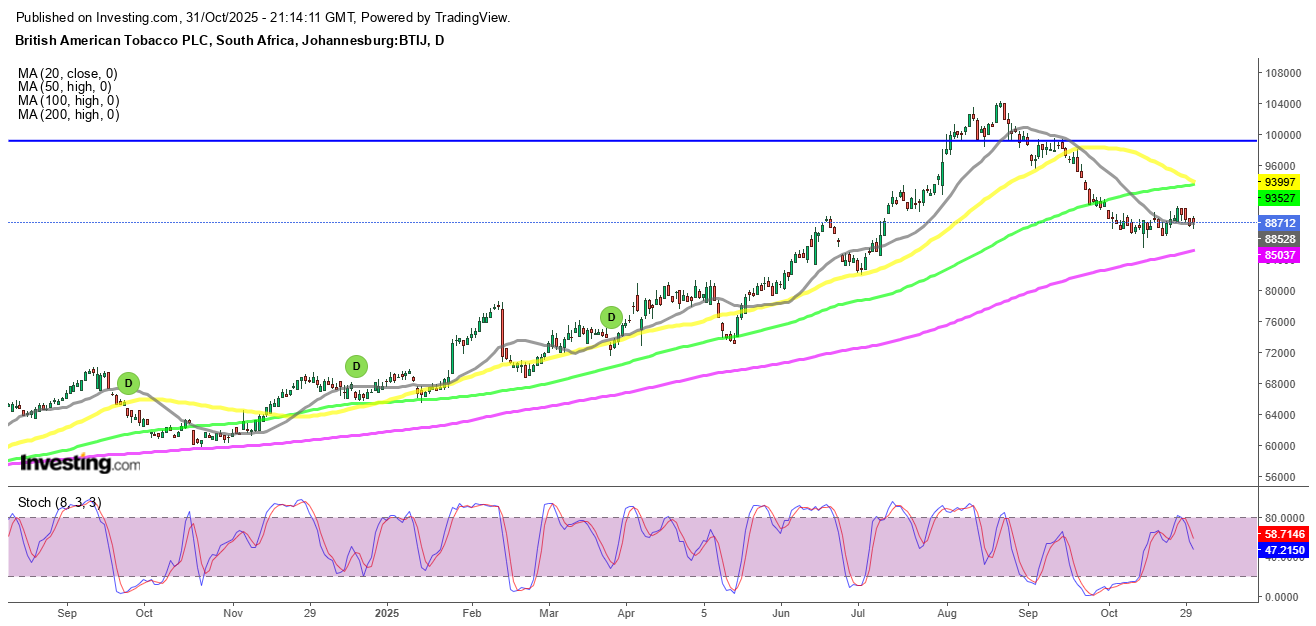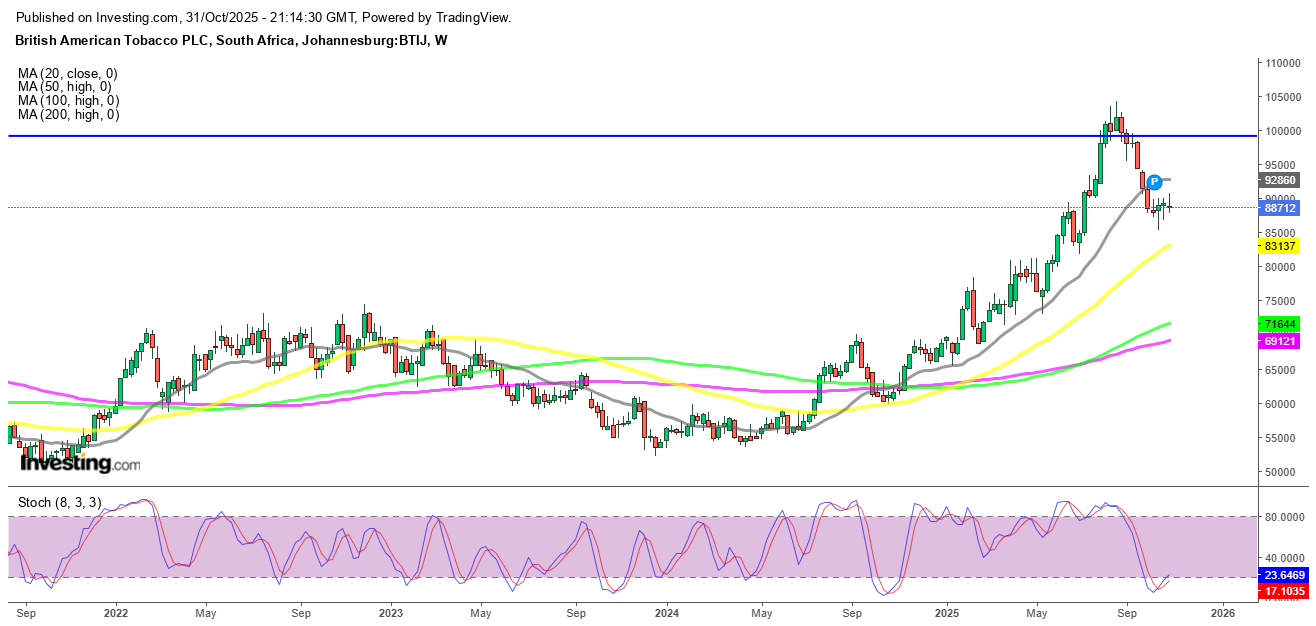British American Tobacco’s Weak Q3 Tests Investor Faith As Profit Plunge, BTI Share Price JSE Holds
British American Tobacco’s third-quarter results revealed a dramatic fall in profit, yet its share price held steady — signaling cautious...

Quick overview
- British American Tobacco reported a nearly 90% decline in net profit for Q3, with revenue halving due to a significant drop in cigarette sales.
- The company cut its third interim dividend to 5 sen per share, down from 22 sen last year, reflecting ongoing financial pressures.
- Despite these challenges, BAT's share price remained stable, indicating cautious investor patience amid structural difficulties.
- The firm's shift towards reduced-risk products showed some growth, but it is insufficient to counterbalance the decline in traditional tobacco sales.
British American Tobacco’s third-quarter results revealed a dramatic fall in profit, yet its share price held steady — signaling cautious investor patience despite growing structural challenges.
Earnings Decline and Dividend Cut
The company’s net profit plunged nearly 90% year-on-year to RM7.02 million, while revenue was halved to RM300.8 million as cigarette volumes fell by almost 50%. BAT also slashed its third interim dividend to 5 sen per share — a sharp reduction from last year’s 22 sen. Over nine months, profit dropped 39% to RM81.24 million, with revenue down 25% to RM1.25 billion.
British American Tobacco Q3 Earnings Overview
BAT reported a sharp downturn in third-quarter performance, marking one of its weakest quarters on record amid new regulations and declining cigarette demand.
Financial Performance
- Net Profit: Down nearly 90% year-on-year to RM7.02 million, the lowest ever recorded.
- Revenue: Dropped by 50% to RM300.8 million, reflecting steep declines in sales volume.
- Dividend: Declared a third interim dividend of 5 sen per share, a significant cut from 22 sen last year.
Operational Pressures
- The introduction of new pictorial health warnings and a retail display ban required heavy compliance investments, further straining margins.
- Combustible product sales plunged nearly 50%, continuing a persistent downward trend in tobacco demand.
Year-to-Date Results
- Nine-month net profit: Fell 39.4% to RM81.24 million.
- Revenue: Declined 25% to RM1.25 billion compared to the same period in 2024.
BTIJ Chart Daily – Retreating After New Record High Above 2016 Highs
Market Reaction and Share Performance
After rallying to a record R1,045 in August, British American Tobacco (JSE: BTI) has struggled to maintain momentum. The stock fell 12.5% in September, slipping below its 20-week moving average to around R855, but has since stabilized. Despite reporting its weakest quarterly profit on record, shares remained within their October trading range, suggesting that investors had already priced in much of the bad news.
Technical Pullback or Trend Reversal?
Regulation and Market Pressures
New rules mandating pictorial health warnings and retail display bans have increased compliance costs and deepened profit strain. BAT also warned that a recent excise duty hike could further pressure margins. Meanwhile, illicit trade in markets like South Africa continues to erode legitimate sales and government tax revenue.
Strategic Transition and Outlook
The company’s shift toward reduced-risk products continues, with its New Categories division posting 7.4% growth and gaining 1.4 million users, now totaling 26.4 million. Yet, these gains remain too small to offset the decline in cigarette sales.
Despite weak financials, BAT continues its share buyback program, signaling long-term commitment to shareholder value. However, profitability remains fragile as regulatory costs rise and traditional product demand weakens.
Conclusion: British American Tobacco’s stability in the face of collapsing profits reflects investor hope that diversification will eventually pay off. But without stronger growth from new product lines and relief from regulatory burdens, the company’s recovery could prove difficult to sustain.
- Check out our free forex signals
- Follow the top economic events on FX Leaders economic calendar
- Trade better, discover more Forex Trading Strategies
- Open a FREE Trading Account




